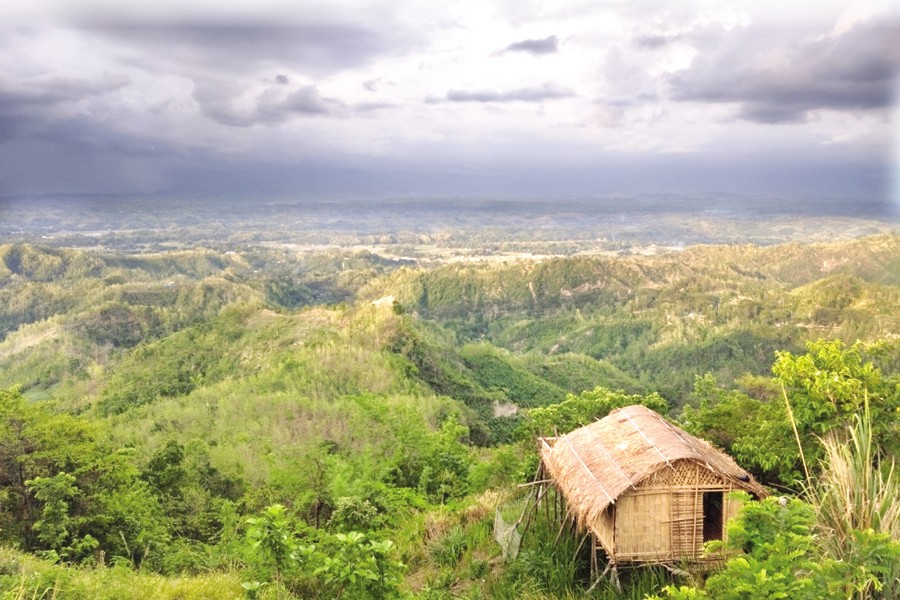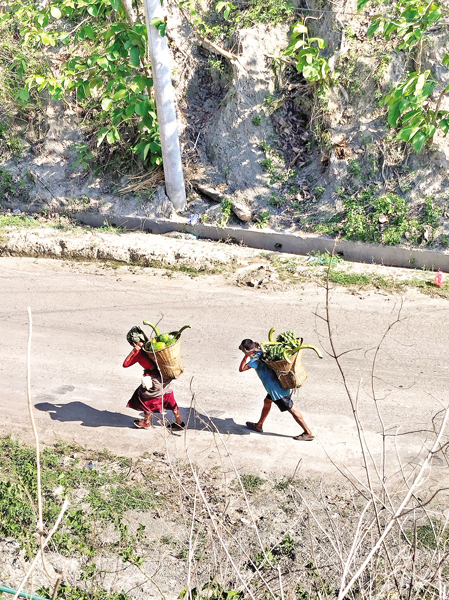
A moonlit adventure in the hills of Bandarban
AFRA NAWMI | Wednesday, 12 June 2024

 Bandarban in Bangladesh is best known for its hills and mountains, including the country's highest peaks. Last month, this writer, with a friend of her, travelled to Lama Upazila in Bandarban on the occasion of Buddha Purnima to enjoy the moonlit nights on the hills. Since it brings you nearer to the moon, a trip to the hills was the perfect escape. As the high-rise buildings and the ever-known pollution of Dhaka obstruct the moon's beauty, a trip to the hills unveiled her most charming look.
Bandarban in Bangladesh is best known for its hills and mountains, including the country's highest peaks. Last month, this writer, with a friend of her, travelled to Lama Upazila in Bandarban on the occasion of Buddha Purnima to enjoy the moonlit nights on the hills. Since it brings you nearer to the moon, a trip to the hills was the perfect escape. As the high-rise buildings and the ever-known pollution of Dhaka obstruct the moon's beauty, a trip to the hills unveiled her most charming look.
We took a bus to Cox's Bazar, then stopped at Chakaria Upazila to catch a jeep to Lama Upazilla, Bandarban. The 40-45-minute jeep ride was an adventure in itself. Each jeep accommodates 14 people and won't depart until full, so we had to wait a bit. But the wait was worth it. The breathtaking journey, with crisscross roads, mountains, and lush greenery on both sides, kept our eyes open despite any sleepiness. Though winding and filled with sharp turns, the roads are well-maintained and navigated by highly skilled drivers.
Reaching Lama, our friend who lives there for his job, received us, and our first quest was for breakfast. We enjoyed a sweaty breakfast amid the load-shedding period. Lama barely has electricity. Yet the charm of the hills and the anticipation of exploring them kept our spirits high.
We had planned to enjoy a moonlit night in the hills and explore the surroundings, but trekking wasn't originally on our to-do list. My friend, however, suggested trekking to Mirinja Valley. Despite our initial reluctance, as we both had never had experience and were not even prepared for it, we agreed. The place has been recently discovered for trekking; it is not yet known to all. The path to Mirinja Valley was breathtaking, with a light breeze making the sunny day more bearable.
When we got to the Mirinja Valley Resort gate, we learned it was about 1100 feet above the ground. There was a little shop selling tea biscuits and a cradle with a tremendous view. However, the guides soon said it was late, and we could only trek tomorrow morning. So, to relax and enjoy the view, we sat in a joom ghar (room). There were around 6/8 joom ghars. You have to book it to spend the night. It costs 1000/1500 per night. Since it was a weekend, there were many tourists or visitors. During the weekdays, the place remains mostly vacant with pin-drop silence.
As far as the eye goes, you will see green hills all around-a whole different view for those living in Dhaka city. Suddenly, we noticed something dark blue in the distance, also hazy, which turned out to be rain far away.
Relaxing and chilling in the joom ghars, we were also waiting for rain in this part of the hills. We were just imagining how it would look to have rain in the mountains. We thought of taking a joom ghar to enjoy the moonlit night. Unfortunately, they were fully booked that day due to the weekend rush, but we stayed as long as we could before the reserved guests arrived.
Forced to vacate the joom ghar, we explored other spots, discovering a nearby jhiri path. Watching us down there, a native warned us not to go too deep as it was becoming dark and risky.
As the evening progressed, the weather turned windy. The perfect weather anybody could ask for. Suddenly, we saw clouds coming to our sides. The clouds soon turned reddish-grey, heavy winds scattered our belongings, and a heavy downpour ensued. It rained for more than an hour, and no one missed the chance to shower.
The highlight of the night was witnessing a blood moon playing hide-and-seek among the clouds. The moon was totally red. At first, we thought it was a fire burning far away. Later, we discovered it was the moon. Though we didn't get the feel of a moonlit night, witnessing a blood moon was no less.
We had always heard about the clouds in Bandarban coming down and entering through the window. This time, we experienced it. Sitting in a shaded straw shelter, playing light music, we felt truly immersed in the magic of Bandarban.
Dinner consisted of barbecue chicken and parata. In between the intermittent rain, we left the resort at around 11 PM. It was enveloped in darkness, with only the sounds of animals and insects. We returned to town on a single motorbike with no other vehicles.
The next day, accompanied by guides Abdullah and Rakin and a group of professional trekkers, we set off for Mirinja Valley. The trek started at 1:30 PM under the scorching sun and was challenging. We were told there were a few jhiri, a cave deep in the hills, which we would visit. We ventured deep into the hills, equipped with sticks, water bottles, and snacks.
Half an hour into the trek, it started to rain. The rain lasted a few minutes, making the trek challenging and turning paths slippery and muddy. At one point, we had to remove our shoes and walk through the mud barefooted. Reaching the first jhiri, all our weariness swept off. Everybody cleaned themselves in the refreshing water. The rain continued sporadically, adding to the adventure.
There were mountains all around, and we saw a house at one peak. The guides told us that there lived a family of six members. It was very high from our perspective, and no direct road was available. They climb up and down daily and bring water and food for themselves. The lives of the hilly people are beyond our imagination. It may be fascinating, but it is not feasible.
Again, we started trekking to see other jhiris and came near one. There was around chest-level water with a heavy flow of currents, and it rained for the second time. The sky was so dark that we felt scared. After that, it was time to go to the cave. As we approached the cave, the sky darkened with more rain, and we postponed exploring it due to safety concerns.
At one point in our trekking, we stopped by a house in the hills owned by an ethnic man who had cows, mango trees and pahari murgi (hen) with them. We had mangoes over there. We met many other ethnic people while trekking. They were carrying fruits like mango, papaya, and banana and heading towards Lama Bazar to sell them.
The return journey was the hardest part, with rain-soaked, muddy paths and makeshift bridges made of tree trunks. We had to step into the dry leaves to have a grip on our legs. Though we faced challenges, the experience was priceless. Our guide, Rakin, found a fresh crab while trekking and took it for himself. Rakin was friendly and helpful. We were lucky to have him because he cared for us all through. Once, he gave away his sandals to me, and he trekked barefoot.
Finally, we saw the road, signalling the end of our trek. The guides charged 600 takas, but the experience was priceless.
Back in Lama, we visited the bazaar, where there is a 'haat-bar' every Saturday. We shopped and explored the Adibasi Paras and the nearby Matamuhuri River. We had our dinner at the famous restaurant there, 'Larong'. Their food tasted nice, a mixture of Adibasi flavour and Bengali cuisine. It was not even expensive-each item cost Tk 80-150.
The serene beauty of the place and the simplicity of the Adibasi community will be remembered for the rest of our lives.
afranawmi@yahoo.com